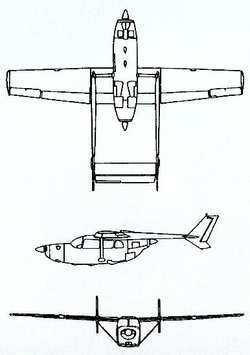Sat, Nov 04, 2006
Blames Pilot's Failure To Address Pitch Control
Malfunction
 The NTSB says a January 2005 crash of a Cessna
337 in Lakeland, FL was likely the result of a pitch
control malfunction. The pilot and a passenger were killed in the
crash.
The NTSB says a January 2005 crash of a Cessna
337 in Lakeland, FL was likely the result of a pitch
control malfunction. The pilot and a passenger were killed in the
crash.
A pre-buy inspection in preparation for its sale revealed no
problems with the aircraft. The new owner had the aircraft ferried
to Florida from California two days prior to the accident -- the
ferry pilot said the trip was "fairly flawless."
During three separate flights the day of the accident a
pilot-rated passenger noted an aggressive pitch-up during take-off
rotation. He noted the pitch trim was set to the proper range. On
the landing prior to the accident flight, the pilot performed a
full-stall landing from an altitude of ten feet.
The pilot requested no inspections or maintenance on the
elevator or pitch trim systems before the accident flight.
On the final take off, a tower controller saw the aircraft pitch
up 30 - 45 degrees before leveling off between 150 - 200 feet. He
said five seconds later the wings began rocking before the aircraft
started descending in a nose and left wing low attitude. The pilot
appeared to make a final attempt to stop the descent before
impacting the runway slightly nose up and left wing low.
Witnesses on the ground reported normal engine sounds from both
engines during the take off.
Post-crash inspections revealed no indication of pre-impact
failure of the primary and secondary flight control cables.
Inspectors found the pitch trim set at four to five degrees nose
down. The aircraft was configured with gear down and flaps at ten
degrees.
Inspectors also carefully examined the pilot's seat finding
evidence the lock pin was engaged at the time of impact. The NTSB
also ruled out problems with weight and balance.
The NTSB concluded the probable cause of the accident as the
pilot's operation of the airplane with known deficiencies in
equipment related to pitch, an abrupt pitch-up during the initial
climb after takeoff for undetermined reasons and the failure of the
pilot to maintain airspeed resulting in inadvertent stall,
uncontrolled descent, and in-flight collision with terrain.
More News
Airport Rotating Beacon A visual NAVAID operated at many airports. At civil airports, alternating white and green flashes indicate the location of the airport. At military airports>[...]
Aero Linx: Fly for the Culture Fly For the Culture, Inc. is a 501(c)(3) non-profit organization that serves young people interested in pursuing professions in the aviation industry>[...]
Klyde Is Having Some Issues Comprehending The Fed's Priorities FMI: www.klydemorris.com>[...]
Also: Viasat-uAvionix, UL94 Fuel Investigation, AF Materiel Command, NTSB Safety Alert Norges Luftsportforbund chose Aura Aero's little 2-seater in electric trim for their next gli>[...]
Also: EP Systems' Battery, Boeing SAF, Repeat TBM 960 Order, Japan Coast Guard H225 Buy Despite nearly 100 complaints totaling millions of dollars of potential fraud, combined with>[...]
 ANN's Daily Aero-Term (04.25.24): Airport Rotating Beacon
ANN's Daily Aero-Term (04.25.24): Airport Rotating Beacon ANN's Daily Aero-Linx (04.25.24)
ANN's Daily Aero-Linx (04.25.24) Klyde Morris (04.22.24)
Klyde Morris (04.22.24) Airborne 04.24.24: INTEGRAL E, Elixir USA, M700 RVSM
Airborne 04.24.24: INTEGRAL E, Elixir USA, M700 RVSM Airborne 04.22.24: Rotor X Worsens, Airport Fees 4 FNB?, USMC Drone Pilot
Airborne 04.22.24: Rotor X Worsens, Airport Fees 4 FNB?, USMC Drone Pilot



